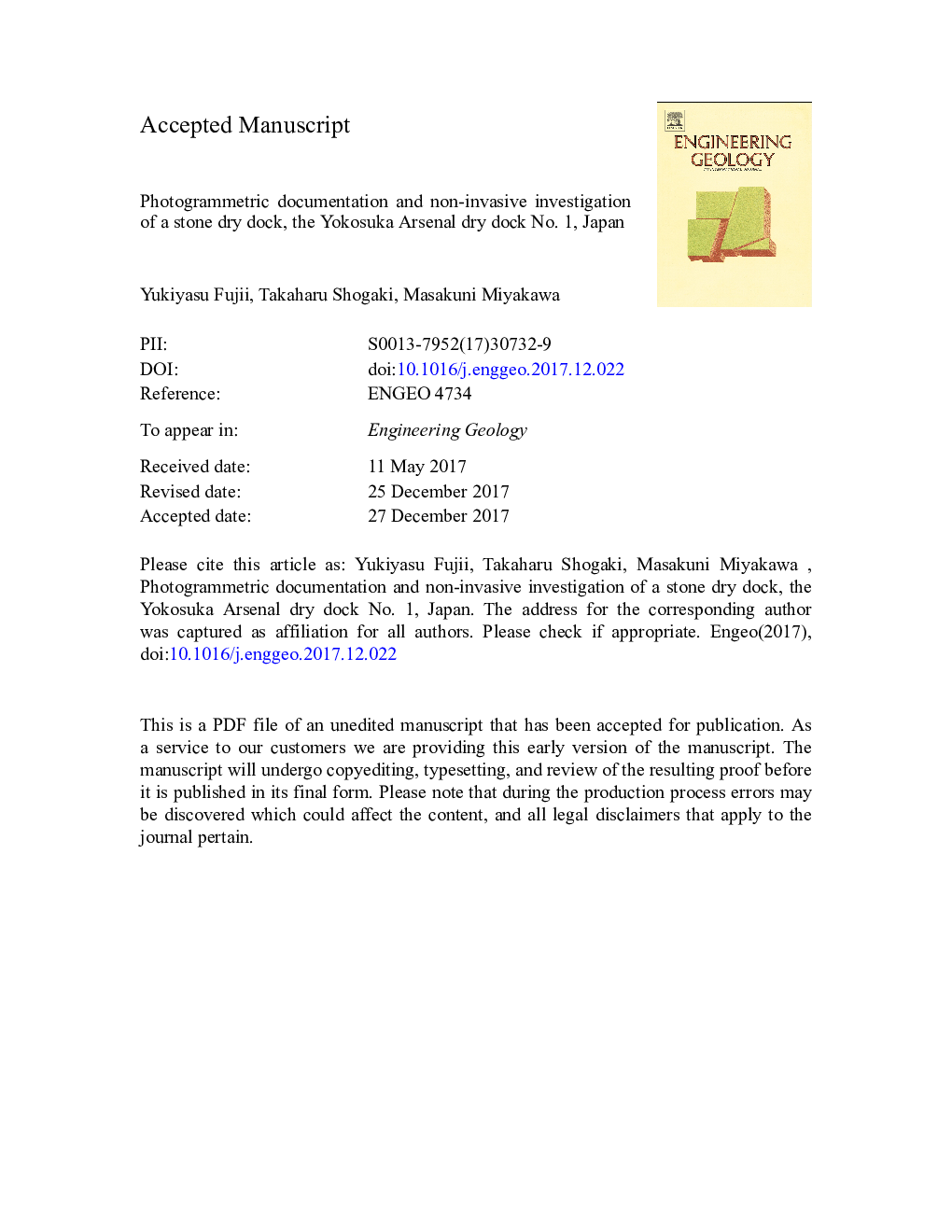| Article ID | Journal | Published Year | Pages | File Type |
|---|---|---|---|---|
| 8915962 | Engineering Geology | 2018 | 36 Pages |
Abstract
The Yokosuka Arsenal dry dock No. 1 is the oldest stone dock in Japan constructed from natural building stones. During the construction of the dock, Hakusen Hill, which comprised mainly Pleistocene sediments, was excavated. In this study, photogrammetric documentation and a non-invasive investigation were used to survey the dock site, evaluate its soundness, and assist in future preservation. Horizontal and vertical sections near the gate were successfully created using a photogrammetrically produced 3D surface model. The vertical sections of the south wall display greater deformation than those on the north wall. The water leakage on both walls was measured using rain gauges placed near the gate. The leakage was found to originate mainly from the mortar between the building stones and was correlated with sea level changes. The results indicate that rising sea level increased the water pressure leading to higher leakage inside the dock walls. The water leakage in the north and south walls peaked at different times, and the amplitude of the sea-level vs. water-leakage hysteresis loops also differed between the north and south walls. These differences may have been caused by the different permeability and storage coefficients of the wall mortar and the backfill materials behind the north and south walls. In addition, the different permeability and storage coefficients were likely caused by the deformation of the south wall due to lithological variations in the material underlying the north and south walls. These results contribute to future preservation plans regarding the soundness of the site. Ground stability is one of the main issues in engineering geology and related fields. Therefore, this study may also be helpful in similar cases worldwide.
Related Topics
Physical Sciences and Engineering
Earth and Planetary Sciences
Geotechnical Engineering and Engineering Geology
Authors
Yukiyasu Fujii, Takaharu Shogaki, Masakuni Miyakawa,
